As thousands of delegates make their way to Las Vegas for this year’s NAB, 3D technology will again be one of the biggest draws.
The annual conference and exhibition hosted by US trade body the National Association of Broadcasters (NAB) provides a focal point for the broadcast technology sector, with purchasing decisions often based around the product launches that take place at the show.
The NAB estimates that $30-40bn worth of products are sold during and immediately after the Las Vegas event, which this year hosts 1,500 exhibitors.
NAB executive vice-president of communications Dennis Wharton expects this year’s show, which runs from 9-14 April, to continue to build on last year’s return to growth after a “muted” 2009.
“Generally, there is a positive feeling right now across all sectors of media,” he told Broadcast.
“The recession had an impact but, from a broadcast perspective, business has rebounded. Media tends to lead an economic recovery, so even though the first reaction in a downturn may be to pull advertising spend, it is also one of the fi rst things to return.”
In 2010, 84,000 people visited NAB and attendance is set to swell by around 6,000 this year. 3D again looks set to be one of the biggest draws at the show, with Avatar director James Cameron and cinematographer Vince Pace delivering the keynote opening address.
Last year, the 3D pavilion doubled in size; this year, all exhibitor space in the pavilion has sold out, with mobile 3D, stereoscopic editing solutions, advances in eyewear and display monitors that don’t require glasses likely to be key areas of interest.
The next level
“James Cameron is going to be talking about his vision for taking 3D to the next level,” says Wharton.
“We will also have Korean company Electronic and Telecommunications Research Institute [ETRI] exhibiting. It will be experimenting with delivery of 3D for fi xed and mobile broadcasting, and that’s likely to be of interest to broadcasters.”
ETRI will demonstrate its augmented data transmission (ATSC-ADT) technology for improved transmission rates and the HD terrestrial 3D TV system using a single 6MHz channel, which, the firm says, guarantees backwards compatibility for legacy ATSC terrestrial DTV systems.
Head of digital media services at BBC Studios and Post Production Clive Hodge says 3D is an important area for the post and studios outfit.
“At NAB, we’re keen to find technologies to help automate 3D processes, because 3D is currently very labourintensive,” he says.
“The studio environment is more controlled than a live outside broadcast, so this presents a real opportunity for cost savings.”
AmberFin is among those using the show to preview an alternative approach to 3D. It will run demonstrations featuring ingest, transcoding, format conversion and standards conversion of S3D footage in an attempt to encourage industry discussion on alternatives to what it describes as a current high-cost technology model based on dedicated hardware.
Among the 150 new exhibitors is Wales-based storage firm Object Matrix. Co-founder Nick Pearce says the company is already “reaping the benefits” of attending.
“At the show, we’ll be launching InterConnect, which integrates MatrixStore with Avid’s Interplay,” Pearce says. “We’ll also be showing our media asset management solution, which is made up of Object Matrix’s MatrixStore, Cantemo’s Portal user interface, and Vidispine’s media asset management backbone.”
Returning exhibitors Oracle, Singular Software, Vidyo and digital camera manufacturer Red are among the firms returning to the show after missing last year’s event.
US-based Red had hoped that production of its 5k digital still and motion camera, which it demonstrated off-site at last year’s NAB, would be well under way by this year’s show. But it has run into production difficulties and delays, which company founder Jim Jannard blames on the ‘Japan effect’.
He says that while only 18 of the Epic-X’s 18,000 parts are manufactured in factories in the north of the country, the lack of components will push shipping of the cameras from April to “summer’s end”.
While broadcasters, producers and post houses have raised concerns that Sony’s HDCam SR tapes are in short supply due to last month’s tragic events in Japan, it is the expansion to the format, HDCam SR Memory, that is likely to generate interest at NAB, according to Jigsaw post-production manager Jamie Allan.
“Having seen a sneak preview of the next evolution for SR Memory, I have to say it’s impressive,” he says.
“5Gbps throughput to a 1TB memory unit the size of a fat SXS card was already very exciting, but the new products make it look even better.
“The new studio deck and memory version of the SR on-camera recording unit will certainly cause a stir, especially if we get to see them working alongside the unknown maybe-4Kmaybe- more Sony camera people have been anticipating for a while now.”
Audio - Sound Advice
Eyeheight research and development director Simon Pegg says NAB is likely to feature plenty of conversations about volume and the different ways broadcasters can make sure they adhere to impending legislation.
The debate is likely to be framed by the new set of volume parameters introduced in the US, but with a second revision of the ITU’s guidelines on the way - and recent complaints over audio levels used in the BBC’s Wonders Of The Universe - it is something that will affect UK broadcasters and programme-makers too.
Eyeheight will use the show as an opportunity to show its Karma audio plug-in, which will help Final Cut Pro, Final Cut Express and Soundtrack Pro users meet broadcast requirements for perceptual volumes and peak programme levels.
Jünger Audio, which specialises in digital audio dynamics processors, will launch two new Combo cards for its modular C8000 processing solution for automated loudness control at NAB.
Jünger Audio managing director Peter Poers says the C8586 card is particularly well suited to the needs of re-broadcasters because it allows them to process up to 32 channels in dual stereo and in one frame.
The Pits - Join the debate
New at this year’s show will be discussion areas known as ‘Pits’, or ‘people integrating technology and solutions’.
The aim is to provide space for different parts of the industry to gather in one location to discuss trends and topics affecting their line of work.
Sessions include radio, audio, video post and broadband.
VFX artists include Mike Seymour and Jeff Heusser of industry forum Fxguide, together with director Jason Wingrove, VFX artist and film-maker Stu Maschwitz and former US Army combat cameramen Tyler Ginter will speak about their recent experiences with Red’s Epic camera, which they tested in a studio environment and in New Zealand, where the crew shot with the 5K cameras from helicopters and on flywires.


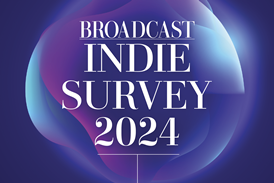




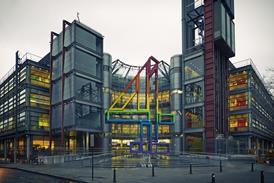

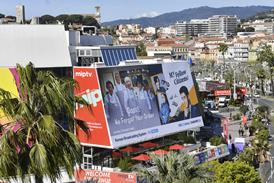





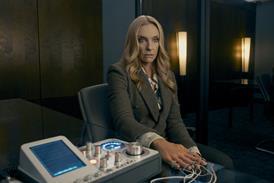

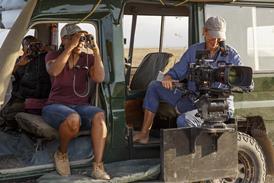
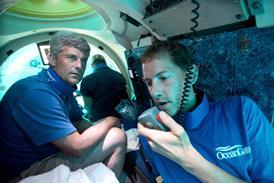






No comments yet